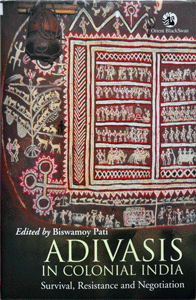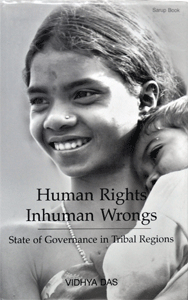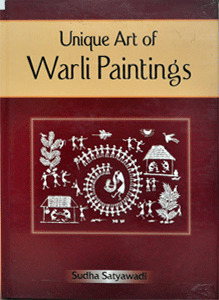Books and Blurbs
How do we define 'adivasis'? A post-modernist approach will situate them as 'colonial constructs'. However, as this book goes to show, tribals were not just a colonial creation. They were a part of south Asian reality at the time of India's colonisation. Their world was not a monolithic one but the order of stratification was significantly reinforced with the advent of colonialism and its diverse intervantions, in terms of the complexities arising out of land settlements and the commercialisation of agriculture. |
|
 |
Bringing together contributions from historians, sociologists, social anthropologists and younger scholars, this volume provides a holistic view of the world of adivasis under the British in the nineteenth and twentieth centuries. It unravels the ways in which the adivasi society negotiated with itself and interacted with the shifts and changes that were raking place during this period. The essays focus on the impact of the sahukar-zamindar-sarkar nexus on the adivasis; the question of dispossession and migration in the face of colonial capitalism and global needs of labour, the process of politicisation and resistance against coercive strategies of control and dominance; the problems within the adivasi society, and the questions of identity and patriarchy; medical colonialism and the adivasi healing systems; and the different ideologies that guided the 'adivasi' politics in colonial India- from protests against feudal rulers, to protests against the national movement and later, the struggles led by the socialists and communists. While tracing the trajectory of the life of the adivasis, the book also examines the genealogy of the concept of higher and lower races. Going beyond the colonial and anti-colonial theme to explore the world of the adivasis and their social history, this book makes a conscious effort to locate the 'present' in the context of the 'past'. It contributes to the understanding of the encroaching colonial ideals and intentions in the name of development and civilisation, that continue to impact their lives even today. This book will be useful for students and scholars of history, sociology, anthropology and cultural studies, and also those interested in policy vis-a-vis India's tribal affairs. Author: Biswamoy Pati is Associate Professor, Department of History, University of Delhi. |
| Human Rights Inhuman Wrongs : State Governance in Tribal Regions
This is a book about development as it affects some of the most poverty stricken and marginalised communities. A collection of articles and essays written over more than 15 years, the book covers a range of issues, communities and people. From tribals in Orissa to slum children in Cannought Place! But the underlying theme of every paper is the issue of justice and fair play denied to the marginalised and the voiceless. The book relentlessly questions the models and paradigms of development today, and in so doing, tries to offer an alternative that would be more people centred and holistic, and allow for diversity exists only in the malls. The rest is a dreary conformity to consumerism and nauseum with disastrous consequences as is becoming increasingly clear. The writings in this book have been questioning this paradigm much before the problems of climate change began to affect us. The book holds that if a people-prioritising people over profits, then much of the environmental problems of today need never have happened. |
 |
|
Tribal Imagination: civilization and the Savage Mind We began as savages, and savagery has served us well- it got us where we are. But how do our tribal impulses, still in place and in play, fit in the highly complex, civilized world we inhabit today? This question, raised by thinkers from Freud to Levi-Strauss, is fully explored in this book by the acclaimed anthropologist Robin Fox. It takes up what he sees as the main- and urgent-task of evolutionary science: not so much to explain what we do, as to explain what we do at our peril. |
|
 |
Ranging from incest and arranged marriage to poetry and myth to human rights and pop icons, Fox sts out to show how a variety of human behaviours reveal traces of their tribal roots, and how this evolutionary past limits our capacity for action. Among the questions he raises: How real is our motion of time? Is there a human right to vengeance? Are we democratic by nature? Are cultural studies and fascism cousins under the skin? Is evolutionary history coming to an end – or just getting more interesting. In his famously informative and entertaining fashion, drawing links from Volkswagens to Bartok to Woody Guthrie, from Swinburne to Seinfeld, Fox traces our ongoing struggle to maintain open societies in the face of profoundly tribal human needs- needs that, paradoxically, hold the key to our survival. Author: Robin Fox, anthropologist, poet, and essayist, is University Professor of Social Theory at Rutgers University and author of Kinship and Marriage:An Anthropological Perspective and The Red Lamp of Incest: An Enquiry into the Origins of Mind and Society. |
|
Tribal Sub-Plan Approach in Orissa The book entitled "Review of Tribal Sub-Plan Approach in Orissa- Study of Provision, Implementation and Outcome" is primarily based on empirical, synchronic and analytical study. The Tribal Sub-Plan (TSP) approach in Orissa state has been critically reviewed right from its inception during the fifth five year plan period. The TSP as a concept or approach or strategy is a conspicuous landmark in the history of tribal development intervention during the post independence period. The book with its holistic perspective takes note of seminal contributions of eminent authorities, visionaries and scholars in the line like, Dr. A.P.J. Abdul Kalam (H.E. Former President of India), Professor Amartya Sen (Nobel Laureate) and several others, while juxtaposing the conceptual frame of the study with its methodological perspective. The comprehensive review study of the kind emerged currently is unique in many respects as it would be a valuable addition to our existing knowledge base on the well being of the S.T. People attempted through the TSP approach. Amidst massive problems of illiteracy, lack of adequate health care facilities, unemployment, poverty, inequality, regional imbalance, environmental pollution and the like we have to make all attempts to cherish a better future for the S.T.s. The book would be of immense help to the policymakers, planners, development practitioners, academicians, researchers and general readers who are deeply concerned with the weakest of the weaker sections of our country. As knowledge produces power and power begets wealth, knowledge is the vital input for development and awareness building is essential to secure popular participation for the attainment of sustainability in the development process. Moreover, humans are the cause and effect of development. Contents of the book include altogether eight chapters, such as Introduction; Tribal Scenario in Orissa; Profile of Study Villages; Implementation Strategy; An overview of Implementation Process; Appraisal of Provision; Outcome Analysis; Summary and Important Findings, Policy Issue and Options and Suggestive Recommendations. Introduction chapter includes theoretical orientation, TSP concept-glimpses, Genesis and Growth, TSP Areas Vis-a-vis Scheduled Areas, approach and strategy, administrative structure and personnel policy, methodological perspective, objective of study, universe and sample, study design, research personnel, data sources, Tools of study, limitations, etc. Thereafter, Tribal Scenario in Orissa has been briefly discussed. The profile of study villages has been discussed elaborately as a prelude to actual exercise. The chapter on Implementation Strategy highlights operational instruments for the development of S.T.s., Administrative structure, Development status, Success and failure stories, Dispersed Tribal Development Programme, Orissa Tribal Empowerment and livelihoods programme, Tribal Development Cooperative Corporation of Orissa Ltd., KBK programmes, etc. The chapter on an Overview of Implementation Process discusses the tribal development administration mechanisms. The next chapter on Appraisal of Provision discusses the sources of funding and the role of various departments. The chapter Seven on Outcome Analysis disucsses social and human development with Human Development Indices and emphasizes on education and literacy, livelihood promotion, income generation, employment generation, access to social opportunities and amenities, gender issues, tribal empowerment, protective ligislation for socio-economic justice, entitlement and deprivation, protection from predatory market forces, empowrment through SHGs and the findings have been quantitatively analysed. The concluding chapter includes summary, important findings, policy issues and options and suggestive recommendations based on the study. The book has essential appendices, tables, maps and sociograms. |
|
|
Research Team Project Director Professor (Dr) A.B. Ota, I.A.S Temporary Research Personal |
 |
| Publisher: Schedule Caste and Schedule Tribe Research and Training Institute Year: 2010 ISBN: 978-93-80705-04-0 |
|
|
Warli painting has its own place in Adivasi art of India. It takes its name from the Warli tribes of Maharashtra. It seems their roots are in the rock shelters of ancestors found in Bhimbhedka and Raisen in Madhya Pradesh. Warli painting are pointers- they fulfill a purpose. Their presence in the hut is auspicious and is said to promote fertility, avert disease, propitiate the dead, etc. They show rituals at birth, marriage, a life full of dance and music, livelihood, connectivity with death and life after death. Artists express a kind of fulfillment they experience that is in harmony with nature and their gods and goddesses. |
|
 |
Warli art is simple yet rich. The material used for painting is simple, themes contained therein, philosophy of existence and even life beyond death, all are brought forth in a most elementary format. Many specimens of Warli art are contained in this book. The paintings are expressive with profound truths and project all that one needs to know to live a happy life. Austere brown wall surface of huts displaying tribal designs with typical rock art motifs make Warli art different from other tribal paintings of India. This book is a modest compilation of Warli art that comes through an unbroken tradition of thousands of years. But Warli art traditions are gradually vanishing. Money elsewhere is pulling artists away from their traditional occupation. Something has to be done by society to create conditions for them, to not get weaned away by lure of commercial avenues. This book is small effort to save this art from falling off from the pathway of time continuum. Author: Dr Sudha Satyawadi is an artist, a researcher, an author. Tribal, rural and folk arts are her interests and she has spent over fifty years on these. Exhibitions of her paintings on rural and folk art have been held in New Delhi, Melbourne, Gaborone, Universities of Stanford, Berkeley, Louisiana, buffalo and Pittsburgh in the last ten years or so. She heads an NGO called Udayan created for encouraging the rural artists who work deep inside a village. She spends much time with them and is working for them. With her background she is trying to preserve this dying art and encourage artists by giving them exposure in the global world. She has authored two books. |



